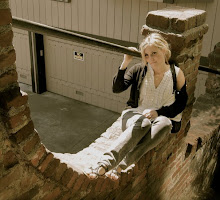
The much-anticipated tour to the famous Disneyland castle, Neuschwanstein, was finally upon us. Jason and I rose early and shuffled off to McDonalds for breakfast. (Jason had previously quieted my caloric fears, reminding me we would be walking off our breakfast over the course of the day). After a way-too-good sausage and egg Mcmuffin, we made our way to the train station to meet with New Munich Tours and our interesting guide Claire who would be energetically (and slightly eccentrically) detail the history of King Ludwig II and the building of his castle in the late 19th century. This young king who was declared insane and unfit to rule by his psychologist, who was obsessed with Wagner and his operas (and dedicated his castle to him), who was most likely homosexual, who talked to imaginary guests and invited his horse to dinner, and who—at a young age—was mysteriously found dead in a lake (with this psychologist)—the cause of death still unknown, was the subject of conversation for the next ten hours. His intriguing life and history provided our journey’s entertainment, although my grande Starbucks, the jostling couple hours on the train, and my desperate need to go to the bathroom, also filtrated my mind between the 19th century Bavarian history lesson.
We were in the foothills of the Bavarian Alps soon enough—surrounded by green pastures, red-roofed farming villages, and autumn-hit trees. After a quick lunch in the town of Schwangau (the economical Jason and I enjoyed our pre-packed peanut butter and jelly), we collectively walked to the trailhead to begin our upward climb to Neuschwanstein. Nestled among the trees and on a foundation of solid rock, the pristinely white castle juts out of the ground, and there truly is something magical about it. Inspired by medieval castles, Ludwig, whose grandiose architectural projects became an outlet for his royal problems, built Neuschwanstein in 186 , and only resided in it 114 days before the Bavarian government brought him back to Munich on the grounds of insanity.
The walk was breath-taking (in both the figural and literal sense; the sun danced through the golden trees and a cool breeze stirred the fallen leaves. Unfortunately that was not the only movement on our walk; a steady stream of sweat made its way down my back, reminding me that for the first time since arriving in Germany, I had on too many layers). When we reached the top, we had an incredible view of the surrounding countryside, a crystal clear lake, little villages, and the Alps behind. I think the thought “I can’t believe I am here right now” crossed my mind more this afternoon than on any previous part of the trip. After multiple dream-like photographs, we entered the castle for our tour. The whole interior is dedicated to Wagnerian operas as every room is decorated thematically to describe a different opera. The paintings and intricate woodwork on all of the walls are brilliant. A common image throughout the castle is the swan—the symbol of the Bavarian government. Although the castle itself is quite large, only 1/3 of the rooms were completed before King Ludwig died, so the tour—although great—was quite short.
After the tour, Jason and I walked to Marienbrücke—a narrow suspension bridge 190 meters high connecting two mountain ledges—which offered an incredible view of the castle in its entirety. The planks creaked beneath us as the fifty or so tourists were jammed together in midair, and I thought about how mom would not have enjoyed this part of the journey ;). The sun was getting lower in the sky, and it was time to head back.
The return ride back to Munich was uneventful besides changing trains three times—all which were slightly crowded. We arrived back in Munich late in the evening, and enjoyed yet another peanut butter and jelly—Hey, the tour was quite pricey, we have to save money somewhere, right? ☺

No comments:
Post a Comment